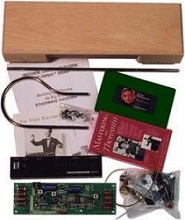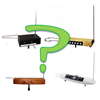
I'm not sure how I feel about this device being called a theremin, but that doesn't mean it's not cool. If you thought playing the theremin was hard because you can't touch it, playing the Teletron must be even harder because you don't even move!
Read: Apples in Stereo Frontman Invents Mind-Controlled Theremin (Pitchfork.com)








4 comments